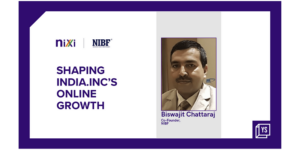Introduction
The B2B marketing landscape is challenging and is being pushed even more by emerging technologies, changing buyer behaviors, and the increasing importance of building long-term relationships. As we move into 2025, businesses need to stay ahead by focusing on strategies that build brand awareness and drive real, measurable results.
The four pillars of B2B marketing
- Content Marketing,
- Influencer Marketing,
- SEO, and
- Social Media Marketing
These are the foundational programs needed to achieve success. These strategies work in tandem to enhance credibility, engage target audiences, and increase conversions. Let’s dive into each pillar and explore how to leverage them for business growth.
1. Content marketing: creating with purpose
Content marketing remains the cornerstone of B2B marketing in 2025, but it’s no longer enough to create random, disconnected content. To make an impact, your content must be purposeful, carefully crafted, and tailored to your personas’ needs.
Key aspects of content marketing in 2025:
- Know Your Personas: In 2025, marketers need a deep understanding of their audience’s pain points, challenges, and goals. Create content that speaks directly to their needs and helps move them through the buyer’s journey.
- Purpose-Driven Content: Every piece of content you create should serve a specific goal, whether it’s educating your audience, building brand trust, or converting prospects into customers.
- Engagement and Credibility: Content that generates engagement is often content that inspires trust. Use case studies, data-driven insights, and expert opinions to back up your messaging.
Examples of purposeful content marketing:
- Publish reports with insights: Share valuable industry research and insights to showcase your expertise and provide real value. Reports on key trends or challenges in your sector can position your brand as a thought leader.
- How-to guides: Publishing detailed, actionable guides can help your audience solve common problems. This will educate them and build trust and authority in your industry.
- Share insights from your users/customers/leaders: Showcasing the experiences and success stories of your customers or company leaders can humanize your brand and demonstrate the impact of your products or services.
- Be generous about what you learn, and don’t hold back. Share what works and what doesn’t in your marketing efforts. Transparency builds credibility, and audiences appreciate the honesty.
Best practices:
- Create a content calendar to ensure that you consistently produce content that speaks to your personas at each stage of their journey.
- Mix content formats such as blogs, videos, webinars, and eBooks to maintain interest and engagement.
2. Influencer marketing: Trust through relationships
In 2025, B2B marketing will increasingly be driven by the influence of trusted industry leaders. People trust people, and the power of peer recommendations and endorsements can drive significant business results.
Key aspects of influencer marketing in 2025:
- Find the right influencers: It’s not about working with the biggest names but finding influencers who resonate with your audience and whose opinions hold weight.
- Build authentic partnerships: Authentic relationships with influencers produce better, long-lasting results. Your influencers should align with your brand values and truly believe in your products or services.
- Scale your program: If you’re just getting started, launch a program; if you have one, scale it. Aim to create an always-on community of influencers who consistently engage with your brand.
Examples of great influencer marketing:
- Podcast collaborations with practitioners: For example, Oktopost’s Behind the Post podcast with Alina Dalal showcases insights from real practitioners. This is a great way to bring attention to the industry’s challenges and solutions.
- Podcast with Thought Leaders: Another example is Radically Transparent, a podcast with Oktopost’s Jennifer Gutman. In it, she interviews thought leaders on transparency and B2B marketing. Podcasts like these engage audiences and position your brand as a leader in the field.
Best practices:
- Research and identify influencers who align with your brand’s values and resonate with your target personas.
- Regularly engage with influencers through collaborations, content partnerships, or interviews to maintain ongoing relationships.
3. Search engine optimization (SEO): Owning keywords and visibility
SEO remains one of the most reliable ways to drive organic traffic and increase visibility in 2025. With the ever-changing algorithms of search engines, staying updated and strategically optimizing content is essential for long-term success.
Key aspects of SEO in 2025:
- Keyword strategy: Focus on long-tail keywords that are highly relevant to your audience and industry. The goal is to rank for terms that show clear intent to purchase or engage.
- Optimizing existing content: SEO isn’t just about creating new content. You must optimize your existing content to ensure it aligns with your current SEO strategy.
- Build a strong link profile: Focus on acquiring high-quality backlinks that enhance your website’s authority.
Examples of great SEO strategies:
- Build a resourceful and focused glossary: Oktopost’s B2B Social Media Glossary is a great example of a content resource designed to improve SEO. Offering a comprehensive, valuable glossary of industry terms becomes an essential resource for both users and search engines.
- Keyword optimization: Regularly audit your website and content for keyword performance, and ensure that your meta tags, images, and content reflect high-value search terms.
Best practices:
- Keep your SEO strategy dynamic—regularly audit and refresh your content based on the latest keyword trends and user behavior.
- Create a content hub that aggregates relevant resources and helps your audience find valuable information easily.
4. Social media marketing: The art and science of engagement
Social media marketing continues to be one of the most powerful tools for engaging B2B customers in 2025. With the right approach, social media can drive lead generation, enhance credibility, and build lasting relationships.
Key aspects of social media marketing in 2025:
- Employee Advocacy: Empower your employees to become brand advocates. Their personal networks can significantly amplify your brand’s message and credibility.
- Social Selling: Equip your sales team with the tools to leverage social media for direct engagement with prospects and customers.
- Integrated Campaigns: Your social media strategy should complement content, SEO, and influencer campaigns to maximize reach and impact.
Examples of remarkable social media marketing:
- Bruker’s advocacy success: This case study showcases how Bruker turned its employees into brand advocates, expanding its reach and generating leads through Oktopost’s advocacy program. Read the full case study here.
- ComplyAdvantage’s advocacy success: Learn how ComplyAdvantage used Oktopost to build an advocacy program that engaged employees and customers, leading to greater brand visibility and lead generation. Read the full case study here.
- Grant Thornton Australia’s B2B marketing elevation: This case study illustrates how Grant Thornton Australia used Oktopost’s platform to elevate its B2B marketing and create a stronger brand presence through employee advocacy. Read the full case study here.
- Upslide’s thought leader transformation: Upslide transformed its employees into thought leaders, leveraging Oktopost’s tools to create a more authentic and influential online presence. Read the full case study here.
- IFS’s social media success: IFS utilized Oktopost’s platform to drive greater engagement, with a focus on employee-driven content and social selling. Read the full case study here.
Best practices:
- Use a comprehensive social media strategy that integrates content creation, employee advocacy, and social selling.
- Track performance metrics closely to refine your social media approach and ensure it’s driving engagement and conversions.
Conclusion
The four pillars of B2B marketing—Content Marketing, Influencer Marketing, SEO, and Social Media Marketing—are more important than ever in 2025. Integrating these strategies into your overall marketing plan can build stronger relationships with your audience, improve brand visibility, and drive sustainable growth. Ready to take your B2B marketing efforts to the next level? Start implementing these pillars today, and watch your business thrive in the ever-evolving digital landscape.










